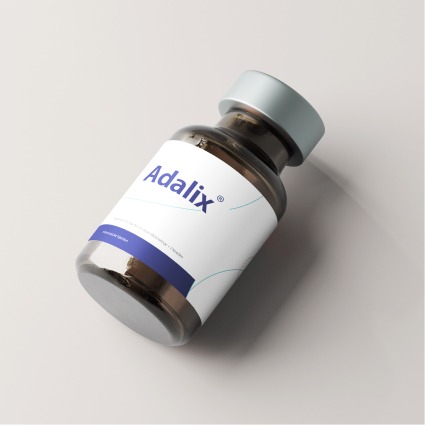Introduction
Biosimilars are increasingly recognized for their potential to transform healthcare by providing cost-effective alternatives to expensive biologic therapies. The Middle East and Africa (MEA) region, characterized by dynamic healthcare needs and economic challenges, is progressively adopting biosimilars. As of 2024, the MEA biosimilars market is projected to reach USD 6.4 billion by 2028, driven by an increasing prevalence of chronic diseases and a focus on healthcare cost containment. This article delves into the current trends, regulatory landscapes, market dynamics, and prospects of biosimilars in the MEA market based on the latest 2024 updates.
The Growth of Biosimilars in the MEA Market
The biosimilar market in the Middle East and Africa (MEA) is experiencing significant growth, driven by regulatory advancements and increasing healthcare demands. As countries in the region implement more robust regulatory frameworks modeled after international standards, the pathway for biosimilar approvals has become more transparent and streamlined. This regulatory clarity, coupled with the expiration of patents for significant biologics and the need for cost-effective treatment options, propels the market forward. Additionally, government initiatives and healthcare reforms are playing a crucial role in fostering an environment conducive to the adoption of biosimilars.
Regulatory Frameworks and Approvals
The regulatory environment in the MEA region is pivotal to adopting biosimilars. In 2024, countries like Saudi Arabia and the UAE continue to lead with stringent guidelines modeled after the European Medicines Agency (EMA) and the US Food and Drug Administration (FDA). These frameworks ensure rigorous quality, safety, and efficacy assessments, facilitating market entry. Conversely, some African nations still grapple with underdeveloped regulatory systems, slowing the approval and uptake of biosimilars.
Market Dynamics and Competitive Landscape
Significant biologic patent expirations, cost savings, and rising chronic disease prevalence influence the competitive landscape of the MEA biosimilar market. Biosimilars’ market share has increased from 1.0% in 2018 to 4.3% in 2022, with countries like Egypt and South Africa leading in adoption. Continued growth is driven by several factors, including government initiatives and healthcare reforms to improve access to affordable treatments.
Key Therapeutic Areas for Biosimilars
In the MEA region, biosimilars notably impact various therapeutic areas, particularly autoimmune diseases and oncology. The high cost of biologic therapies for these conditions has historically limited patient access, but biosimilars are now providing more affordable options without compromising efficacy. Adopting biosimilars in these areas improves patient outcomes and reduces the financial burden on healthcare systems. With chronic diseases like diabetes also prevalent in the region, biosimilars are offering viable alternatives to expensive biologic therapies, further broadening their impact.
Autoimmune Diseases and Oncology
Biosimilars have significantly impacted the treatment of autoimmune diseases and cancer. Due to their efficacy and affordability, the adoption of TNF blockers and monoclonal antibodies, essential for managing these conditions, is rising. For example, biosimilars of trastuzumab, used in breast cancer treatment, have expanded treatment options for patients at a lower cost.
Diabetes and Other Chronic Conditions
The high prevalence of diabetes and chronic conditions in the MEA region drives substantial demand for cost-effective treatments. Biosimilars provide viable alternatives to expensive insulin analogs and other biologics, enhancing patient access to essential medications.
Economic Impact and Healthcare Cost Savings
Biosimilars offer significant economic benefits by reducing healthcare costs. In some cases, biosimilars can provide up to 80% savings compared to their reference biologics. These savings allow healthcare systems to reallocate resources to other critical areas, improving healthcare delivery and patient outcomes.
Challenges and Barriers to Biosimilar Adoption
Despite the promising outlook for biosimilars in the MEA region, several challenges remain. Regulatory heterogeneity across different countries creates complexities for market access and approval processes. Additionally, stringent requirements for interchangeability and substitution in some markets add another layer of difficulty for biosimilar adoption. Beyond regulatory hurdles, there is also the issue of physician and patient acceptance. Overcoming skepticism and building confidence in the safety and efficacy of biosimilars requires comprehensive education and awareness campaigns. Addressing these challenges is crucial for the continued growth and success of biosimilars in the region.
Regulatory and Market Access Barriers
Despite the promising outlook, several challenges impede the widespread adoption of biosimilars in the MEA region. Regulatory heterogeneity and the lack of harmonized guidelines across countries create market access barriers. Additionally, stringent requirements for interchangeability and substitution in countries like Saudi Arabia and Egypt pose significant hurdles.
Physician and Patient Acceptance
Achieving physician and patient acceptance of biosimilars is crucial for successful integration into the healthcare system. Education and awareness campaigns highlighting biosimilars’ safety, efficacy, and cost benefits are essential to overcoming skepticism and resistance.
The Future of Biosimilars in the MEA Market
Looking ahead, the future of biosimilars in the MEA market appears promising, with numerous strategic collaborations and investments set to drive further growth. Partnerships between local pharmaceutical companies and global biosimilar manufacturers facilitate technology transfer and boost local production capabilities. These collaborations are essential for ensuring a steady supply of high-quality biosimilars. Moreover, ongoing policy and regulatory reforms to harmonize regional standards will likely enhance market access and adoption. As the MEA region continues to evolve, these strategic initiatives will be vital to unlocking the full potential of biosimilars, improving healthcare outcomes, and achieving economic sustainability.
Strategic Collaborations and Investments
Strategic collaborations between local pharmaceutical companies and global biosimilar manufacturers drive market growth. These partnerships facilitate technology transfer, enhance local manufacturing capabilities, and ensure a steady supply of high-quality biosimilars. 2024, several such collaborations are underway, signaling a solid future for regional biosimilars.
Policy and Regulatory Reforms
Ongoing policy and regulatory reforms to streamline approval processes and ensure consistent quality standards will significantly impact the biosimilar market. Harmonizing regulations across the MEA region can facilitate smoother market entry and broader access to biosimilars—efforts in 2024 focus on aligning with international standards to boost confidence and adoption.
Localizing Technologies for Self-Sustainability in Oman
To achieve self-sustainability, Oman must focus on localizing biosimilar technologies. Establishing local manufacturing units, investing in research and development, and fostering collaborations with global biotech firms are essential steps. These initiatives will reduce import dependency, create job opportunities, and enhance the country’s healthcare infrastructure.
Conclusion
The MEA region holds immense potential for the growth of biosimilars, driven by favorable regulatory environments, increasing healthcare needs, and economic benefits. Overcoming challenges related to regulatory harmonization, market access, and acceptance will be crucial in unlocking the full potential of biosimilars. As the region evolves, strategic investments and policy reforms will pave the way for a sustainable and thriving biosimilar market.
In summary, the MEA biosimilars market is poised for significant growth, offering promising opportunities for improving healthcare access and affordability. By addressing existing challenges and leveraging strategic collaborations, the region can fully realize the benefits of biosimilars, ensuring better health outcomes for its population.

